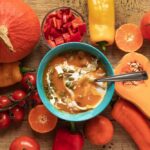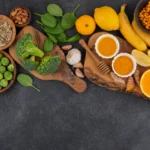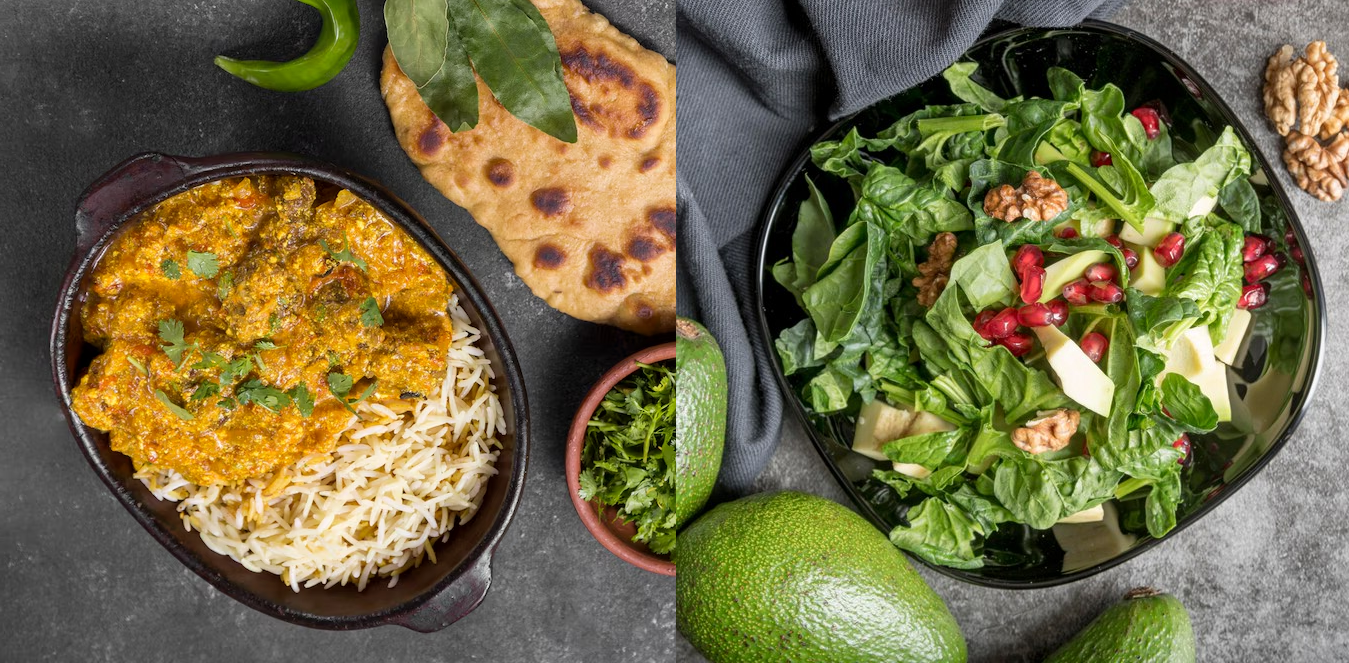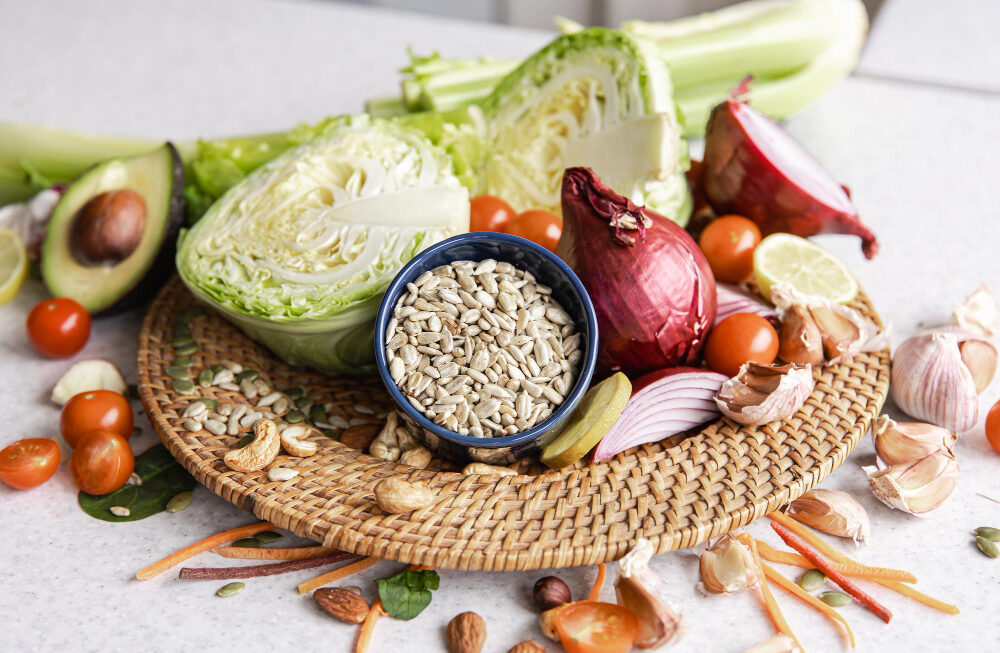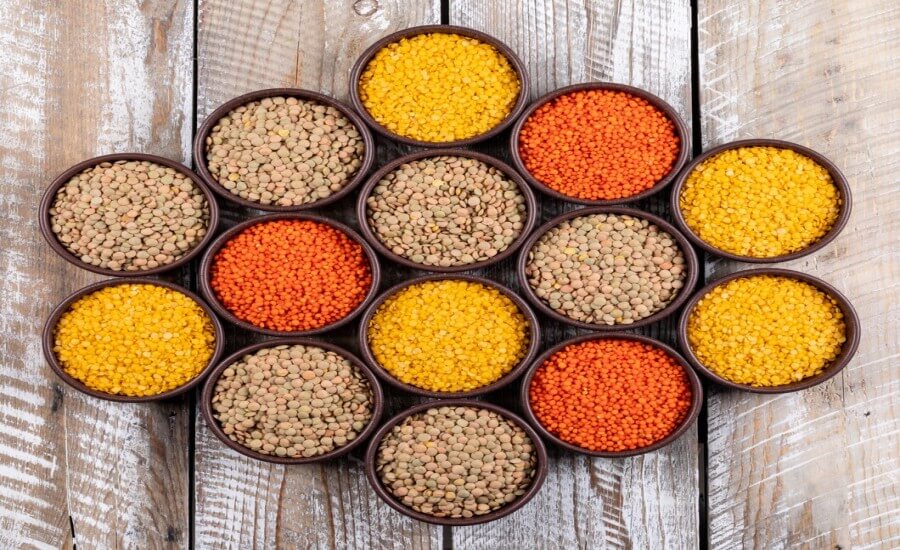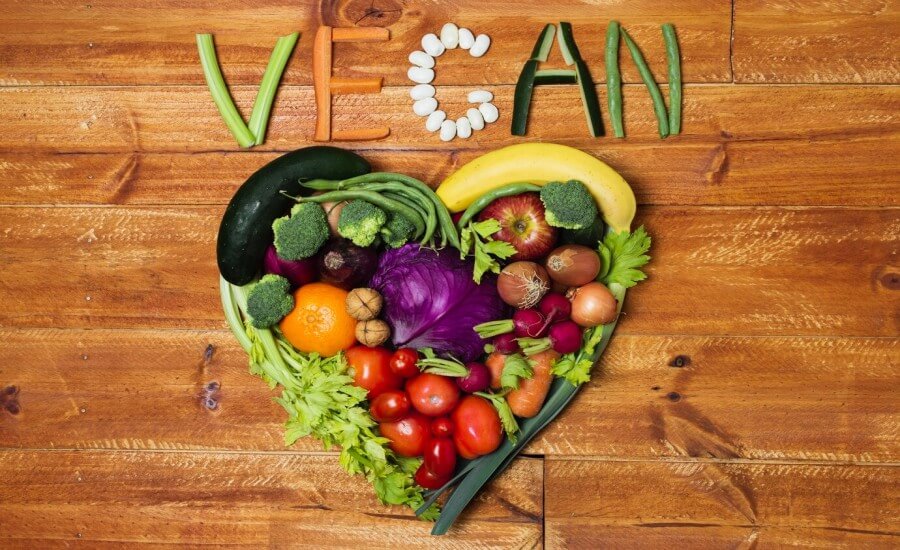Veganism, often rich in carbohydrates from fruits, grains, and legumes, and low-carb or ketogenic diets, emphasizing fats and restricting carbs, seem fundamentally opposed. Yet, the question arises: Is a Low-Carb Vegan Diet Possible? This 360° analysis explores this dietary dilemma through multiple lenses – the practical realities faced by the Practitioner, the nutritional scrutiny of the Dietitian, the metabolic understanding of the Biochemist, the considerations of the Ethical Advocate, and the societal context observed by the Social Observer. As dietary choices are continuously explored, we assess the feasibility, challenges, and implications, especially within contexts like Vadodara, India, where traditional vegan diets are typically carb-centric.
Is a Low-Carb Vegan Diet Possible? An In-depth Analysis
Dietary Dilemma: Veganism Meets Low-Carb
The standard plant based vegan diet eliminates all animal products, naturally leading to a higher intake of plant-based carbohydrates. Conversely, low-carbohydrate diets (ranging from moderate restriction to very low-carb ketogenic plans) drastically limit carbohydrate intake, forcing the body to utilize fat for energy. Combining these two seemingly contradictory approaches presents a unique set of challenges and requires significant dietary modification, careful planning, and a deep understanding of nutritional needs. Is it a sustainable health strategy or a nutritional tightrope walk? Let’s investigate.
LENS 1: The Practitioner’s Path – Navigating the Challenges
For the individual attempting a Low-Carb Vegan Diet, the journey is marked by practical hurdles and the need for diligent planning.
- Motivation: Reasons vary – often weight management, blood sugar control (for conditions like type 2 diabetes), managing epilepsy (ketogenic), perceived health benefits, or following trends.
- The Core Challenge: Eliminating or drastically reducing vegan staples rich in carbohydrates:
- Grains: Rice, wheat (roti, bread, pasta), oats, quinoa, millet (bajra), etc.
- Legumes: Most beans (rajma, black beans), lentils (dal), chickpeas (chana), peas (matar).
- Starchy Vegetables: Potatoes, sweet potatoes, corn, yams.
- Most Fruits: Bananas, mangoes, apples, oranges (except small amounts of low-sugar berries).
- Sugars & Sweeteners: Maple syrup, agave, regular sugar.
- Key Food Staples: The diet revolves around:
- Non-Starchy Vegetables: Leafy greens (spinach/palak, kale, lettuce), broccoli, cauliflower (gobi), bell peppers (simla mirch), zucchini, eggplant (brinjal), mushrooms, asparagus, cabbage (kobi), radish (mooli).
- Healthy Fats: Avocado, nuts (almonds, walnuts, pecans, macadamias), seeds (chia, flax, hemp, pumpkin, sesame), coconut (oil, milk, cream, flakes), olives & olive oil. Peanuts and coconut are very relevant in the Indian context.
- Plant-Based Proteins (Low-Carb): Tofu, tempeh, seitan (wheat gluten), edamame (in moderation), lupini beans, nutritional yeast, certain seeds (hemp), and some low-carb vegan protein powders (pea, hemp, soy isolate). Sourcing diverse options like tempeh or seitan can be challenging in places like Vadodara.
- Meal Planning Intensity: Requires meticulous planning and preparation to ensure nutrient adequacy and variety while staying within carb limits. Spontaneity becomes difficult.
- Social & Cultural Hurdles: Eating out is extremely challenging, especially in cultures with carb-heavy cuisines like India where meals often center around roti, rice, and dal. Explaining the diet can be complex. Family meals require careful navigation or separate preparation.
- Cost & Accessibility: Reliance on specific ingredients like avocados, imported nuts/berries, vegan protein powders, or specialty low-carb products can increase grocery costs compared to a staple-based vegan diet.
- Daily Impact: Requires constant vigilance over food choices, significant meal prep time, and potentially navigating social awkwardness. Energy levels might fluctuate, especially during adaptation.
- Voice of Experience (Individual on Vegan Keto): “It’s definitely possible, but it takes serious commitment. Meal prep is everything. Finding enough protein without beans and grains was the biggest hurdle initially. Social events are tough.”
- Perspective Question: What do you foresee as the biggest practical challenge for you in attempting a low-carb vegan diet?
Read more: Best Plant-based Diet For Heart Health – Cardiovascular Health
LENS 2: The Nutritionist’s Assessment – Balancing Act & Adequacy

The nutritionist evaluates the Low-Carb Vegan Diet for nutritional completeness, safety, and suitability, emphasizing potential risks alongside any benefits.
- Defining Low-Carb: Levels vary. Moderate might be <100-130g/day, while ketogenic is typically <50g or even <20-30g net carbs per day to induce ketosis.
- Nutritional Adequacy Concerns: This restrictive combination poses significant risks for deficiencies:
- Fiber: Drastically reduced intake from grains, legumes, and most fruits. Requires very high intake of non-starchy vegetables, nuts, and seeds (chia, flax, hemp) to compensate.
- Micronutrients: Standard vegan concerns remain critical: Vitamin B12 (supplementation essential), Vitamin D (supplementation likely needed), Calcium (reliant on fortified foods, leafy greens, tofu set with calcium), Iron & Zinc (careful selection of nuts, seeds, tofu; absorption enhancers like Vit C important).
- Omega-3 Fatty Acids: ALA from flax/chia/walnuts needs conversion. Direct EPA/DHA from algal oil supplements is highly recommended.
- Electrolytes: Significant risk of imbalances (sodium, potassium, magnesium) during adaptation (“keto flu”) due to water loss as glycogen stores deplete. Requires conscious intake via salt, potassium-rich low-carb foods (avocado, spinach), and possibly magnesium supplements.
- Protein Intake: Achieving adequate protein (often recommended higher due to potentially lower bioavailability of some plant sources) without high-carb legumes requires reliance on tofu, tempeh, seitan, nuts, seeds, and potentially protein powders. Soy protein quality is comparable to animal protein.
- Fat Quality: Emphasis on healthy unsaturated fats (avocado, nuts, seeds, olive oil) is important. Over-reliance on saturated fats like coconut oil could negatively impact cholesterol levels for some individuals.
- Suitability & Risks: Not appropriate for everyone (e.g., individuals with kidney disease, history of eating disorders, pregnant/breastfeeding women). Potential side effects include keto flu (headache, fatigue, nausea), constipation (if fiber is low), bad breath. Long-term health effects are still not fully understood due to limited research.
- Professional Guidance: Strongly recommended to consult a registered dietitian or knowledgeable healthcare professional before starting and during the diet to ensure nutritional adequacy and safety.
- Nutritional Deep Dive: Getting Enough Fiber Fiber is crucial for gut health, satiety, and blood sugar control. On a low-carb vegan diet, eliminating grains and legumes removes major fiber sources. To compensate, one must prioritize high-fiber, low-carb vegetables (leafy greens, broccoli, cauliflower, asparagus), avocados, nuts (almonds, walnuts), and especially seeds like chia, flax, and hemp, which are fiber powerhouses. Psyllium husk can also be used as a supplement.
- Voice of Experience (Registered Dietitian): “A low-carb vegan diet is theoretically possible but nutritionally precarious. Ensuring adequate intake of fiber, protein, and several key micronutrients like B12, iron, calcium, zinc, and omega-3s requires meticulous planning and likely supplementation. It’s not a diet to undertake lightly or without professional guidance.”
- Perspective Question: Considering the potential nutrient gaps, which supplements would you prioritize if attempting this diet?
LENS 3: The Biochemist’s View – Metabolic Machinery on Plants

The biochemist explains the underlying metabolic changes when combining veganism with a very low-carbohydrate intake.
- Metabolic Shift (Ketosis): When carbohydrate intake drops drastically (<50g/day), the body depletes its glycogen stores. Insulin levels fall, signaling the body to increase fat breakdown (lipolysis). Fatty acids travel to the liver and are converted into ketone bodies (acetoacetate, beta-hydroxybutyrate, acetone). These ketones can then be used as an alternative fuel source by the brain and other tissues that normally rely on glucose.
- Fat Adaptation: Over time, the body becomes more efficient at utilizing fat and ketones for energy.
- Gluconeogenesis: Even with very low carb intake, the body can produce necessary glucose from non-carbohydrate sources, primarily amino acids (from protein breakdown) and glycerol (from fat breakdown), through a process called gluconeogenesis in the liver.
- Plant vs. Animal Fuels:
- Fats: Plant-based fats are often predominantly unsaturated (mono- and polyunsaturated), compared to the higher saturated fat content of many animal fats. Both types are broken down for energy, but different fatty acid profiles can have varying effects on blood lipids and inflammation.
- Proteins: Plant-based proteins provide the necessary amino acids for gluconeogenesis and tissue repair, though some may have slightly lower digestibility or different amino acid profiles (requiring combination strategies, though less critical when overall protein intake is adequate).
- Voice of Experience (Metabolic Researcher): “From a biochemical standpoint, the body can adapt to using fat-derived ketones as its primary fuel, regardless of whether the dietary fat and protein come from plant or animal sources. The key is consistent, significant carbohydrate restriction to maintain low insulin levels and drive ketogenesis.”
- Perspective Question: How does understanding the body’s ability to use ketones for fuel change your perception of dietary fat?
LENS 4: The Ethical Advocate’s Query – Alignment & Impact

The ethical advocate examines whether the typical practices of a Low-Carb Vegan Diet align with broader vegan principles of sustainability and minimizing harm.
- Food Sourcing & Sustainability: This diet often relies heavily on:
- Imported Foods: Avocados, nuts (almonds, macadamias), seeds, berries, coconut products may travel long distances, increasing carbon footprint compared to local staples.
- Resource-Intensive Crops: Almonds, for example, are very water-intensive. Avocado cultivation has environmental and social concerns in some regions.
- Monocultures: Reliance on a smaller range of foods can potentially support less biodiverse agricultural systems compared to diets including diverse grains and legumes.
- Processed Substitutes: Achieving palatability and variety may lead to increased consumption of processed low-carb vegan products (meat alternatives, cheeses, bars) which can have significant processing energy, packaging waste, and potentially questionable ingredients.
- Alignment with Core Veganism?: Some argue that a core principle of veganism includes promoting sustainable, accessible food systems. A highly restrictive diet relying on potentially unsustainable or imported luxury goods may seem at odds with this for some, contrasting with simpler vegan diets based on local grains, legumes, and vegetables. Beans, being nitrogen-fixers, are particularly beneficial for soil health.
- Voice of Experience (Environmental Vegan Advocate): “While possible, a low-carb vegan diet often shifts reliance towards foods with higher environmental footprints or ethical sourcing concerns compared to traditional plant-based staples like local lentils and grains. It requires extra mindfulness regarding sustainable sourcing.”
- Perspective Question: How important is the environmental footprint of your food choices when considering a restrictive diet like low-carb vegan?
LENS 5: The Social Observer’s Take – Culture, Trends & Feasibility
This lens observes the Low-Carb Vegan Diet as an intersection of dietary trends within a broader social and cultural context.
- Intersection of Niche Trends: Combines two specific dietary movements – veganism and low-carb/keto – creating a highly specialized niche.
- Rise of “Vegan Keto”: Driven by online influencers, bloggers, cookbooks, and specialty product development catering to this niche demand.
- Cultural Challenges (Especially India): Extremely difficult to follow within cultures where carbohydrates form the foundation of most meals.
- Indian Context: Traditional vegetarian/vegan meals heavily rely on rice, roti (wheat), dal (lentils), potatoes, and other starchy vegetables. Avoiding these eliminates the vast majority of common dishes. Sourcing diverse, affordable low-carb vegan staples like tempeh, seitan, various nuts/seeds, avocados, or berries can be challenging and costly in places like Vadodara compared to the West. Reliance shifts heavily to accessible vegetables (gourd/dudhi, cabbage/kobi, cauliflower/gobi, spinach/palak), coconut, peanuts, and perhaps paneer for vegetarians (but not vegans).
- Social Settings: Eating out becomes almost impossible without extensive modification requests or bringing one’s own food. Attending social gatherings, festivals, and family meals poses significant challenges and potential isolation.
- Perception & Judgment: Individuals may face skepticism or judgment from both the mainstream (finding it too restrictive) and potentially parts of the vegan community (questioning its sustainability or necessity).
- Market Transformation Map: Show the niche but growing market segment for “Vegan Keto” labelled products (protein powders, bars, snacks, sweeteners) primarily in Western markets, with slower/limited penetration in places like India.
- Voice of Experience (Sociologist Studying Food Trends): “The low-carb vegan diet exemplifies the hyper-individualization of modern dietary practices, often driven by online communities and niche markets. Its feasibility is heavily dependent on socio-economic status and cultural food environment, making it particularly challenging outside specific Western contexts.”
- Perspective Question: How would you navigate explaining this dietary choice at a family gathering where traditional, carb-rich food is served?
PERSPECTIVE INTERSECTION MATRIX
| INTERSECTION | PRACTITIONER | NUTRITIONIST | BIOCHEMIST | ETHICAL ADVOCATE | SOCIAL OBSERVER |
| Practitioner | – | Needs guidance on adequacy | Experiences metabolic effects | Faces sourcing dilemmas | Navigates social challenges |
| Nutritionist | Assesses risks/benefits | – | Needs biochemical understanding | Considers nutrient sourcing | Aware of dietary trends/risks |
| Biochemist | Explains energy shift | Informs nutrient needs | – | – | – |
| Ethical Advocate | Questions food choices’ impact | Links nutrition & sustainability | – | – | Sees clash with localism |
| Social Observer | Notes trends & challenges | Sees diet in cultural context | – | Observes ethical debates | – |
Analysis: The Practitioner’s ability to follow the diet depends heavily on Nutritional guidance to avoid deficiencies and manage side effects explained by Biochemistry. Social/Cultural context presents major barriers, while Ethical considerations add another layer of complexity regarding food choices, intersecting with sourcing and sustainability.
MISCONCEPTION ANALYSIS
| MISCONCEPTION | REALITY |
| A low-carb vegan diet is impossible because vegan staples are carbs. | Difficult, but possible. It requires eliminating most staples (grains, legumes, fruits, starchy veg) and focusing heavily on non-starchy vegetables, fats (nuts, seeds, oils, avocado, coconut), and specific plant proteins (tofu, tempeh, seitan). |
| It’s the healthiest way to be vegan. | Not necessarily. While potentially beneficial for specific goals (e.g., blood sugar control), it carries significant risks of nutrient deficiencies and may rely on processed foods or less sustainable imports. A well-planned balanced vegan diet is healthy for most. |
| You can’t get enough protein on a low-carb vegan diet. | Challenging but achievable through concentrated sources like tofu, tempeh, seitan, hemp seeds, nutritional yeast, and potentially low-carb protein powders. Requires careful planning. |
| You’ll have no energy without carbs. | Initially, maybe (“keto flu”). Once fat-adapted (if ketogenic), the body efficiently uses fat and ketones for energy. Adequate calorie and fat intake is crucial. |
| It’s easy to follow with all the “vegan keto” products available. | These products help but can be expensive, processed, and not universally available (especially outside major Western cities). The diet still requires significant whole-food planning and restriction. |
KEY TURNING POINTS
- Popularization of Low-Carb/Keto Diets: Created general interest in carb restriction.
- Growth of Veganism: Established a population seeking plant-based options for various dietary approaches.
- Online Communities & Influencers: Provided platforms for sharing experiences, recipes, and creating demand for vegan low-carb solutions.
- Vegan Product Innovation: Development of better tofu/tempeh products, low-carb vegan protein powders, sweeteners, and snacks catering to the niche.
- Increased Nutritional Awareness (and Scrutiny): Growing understanding of the potential benefits and significant risks/challenges involved.
SYNTHESIS & RECOMMENDATIONS: Convergent Reflections – Possible, but Demands Planning
So, is a Low-Carb Vegan Diet possible? The answer is yes, but with significant caveats. It is biochemically feasible for the body to adapt (Biochemist), but it presents considerable practical challenges (Practitioner), substantial nutritional risks requiring meticulous planning and likely supplementation (Nutritionist), potential ethical dilemmas regarding sustainability (Ethical Advocate), and significant social and cultural hurdles, especially in carb-centric food environments like India (Social Observer).
- Recommendations:
- Consult Professionals: Essential to work with a knowledgeable dietitian and doctor before starting and for ongoing monitoring.
- Prioritize Whole Foods: Focus on non-starchy vegetables, avocados, nuts, seeds, tofu, and tempeh over processed substitutes.
- Plan Meticulously: Track macronutrients and ensure adequate intake of micronutrients (esp. B12, D, Omega-3, Iron, Zinc, Calcium, electrolytes) and fiber.
- Supplement Wisely: B12 is essential; others (D, Algal Omega-3, electrolytes) are likely necessary.
- Be Realistic: Acknowledge the challenges, especially social and cultural ones. Consider if a moderate low-carb approach might be more sustainable than strict keto.
- Listen to Your Body: Pay attention to energy levels, digestion, and overall well-being. This restrictive diet is not suitable for everyone.
While possible, a low-carb vegan diet demands a high level of commitment, knowledge, and resources. It deviates significantly from typical, often simpler and more sustainable, ways of eating vegan.
FURTHER AREAS OF EXPLORATION
- Detailed Low-Carb Vegan Meal Plan Examples
- Strategies for Managing the “Keto Flu” on a Vegan Diet
- Long-Term Health Outcomes of Low-Carb Vegan Diets (Research is limited)
- Low-Carb Vegan Diets for Athletes: Considerations and Challenges
- Sourcing Low-Carb Vegan Foods Affordably in Different Regions (e.g., India)
- Comparing Moderate Low-Carb Vegan vs. Vegan Keto Approaches
